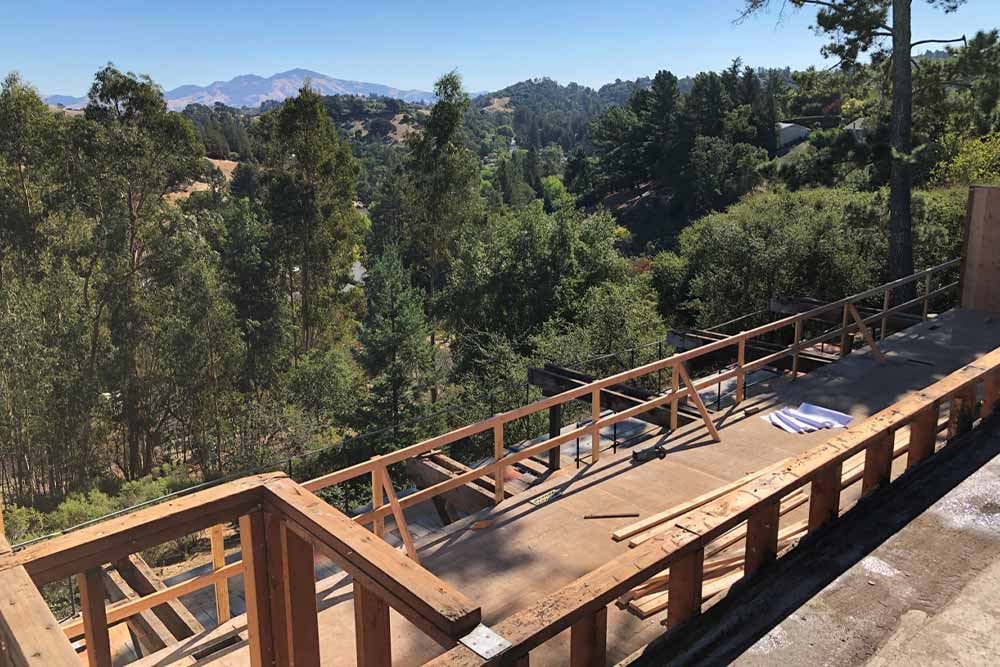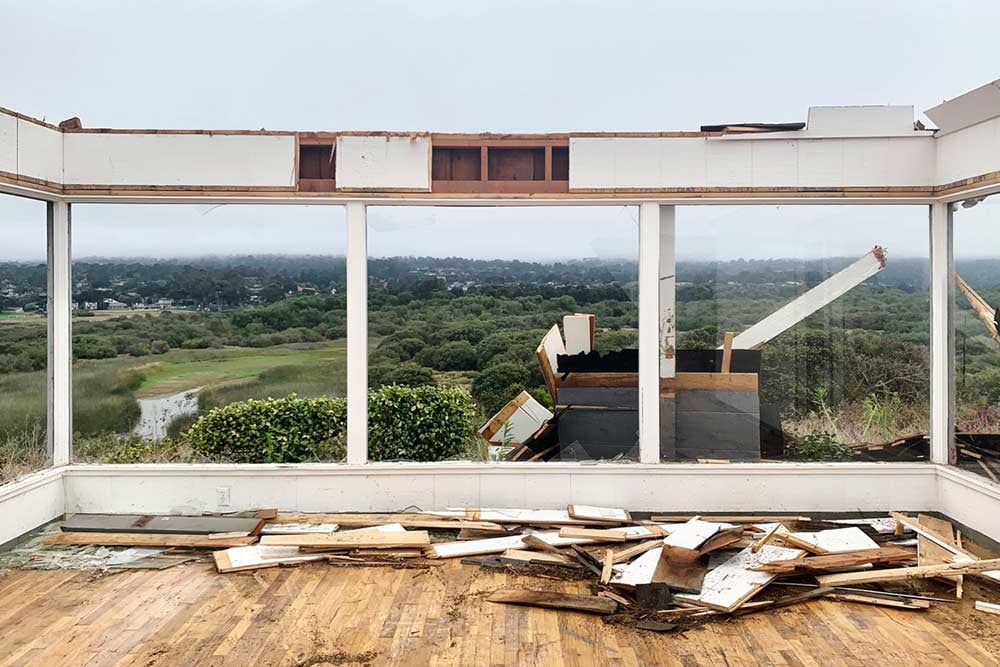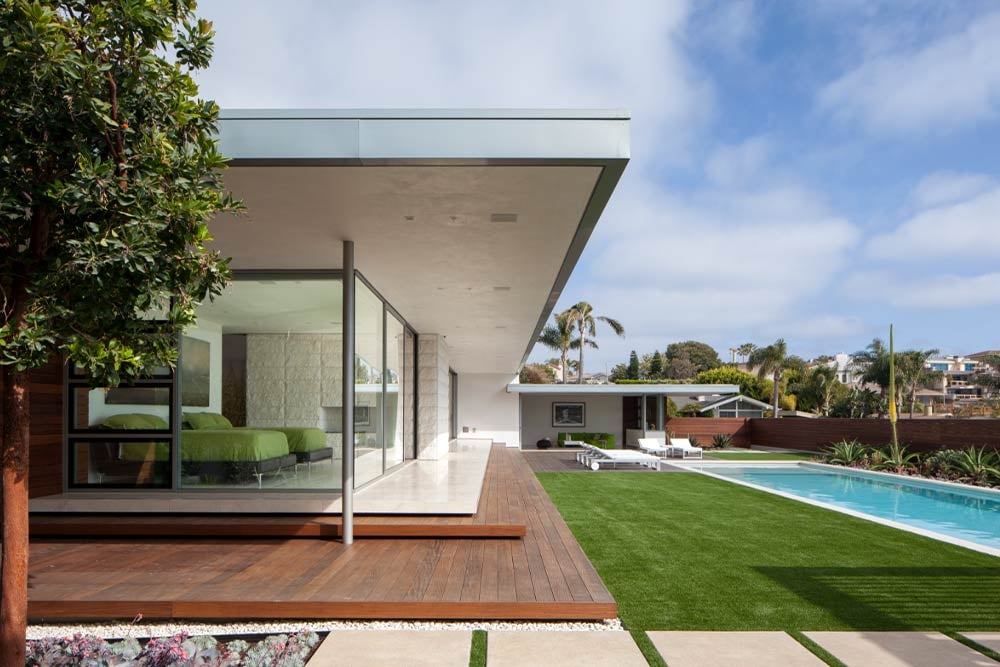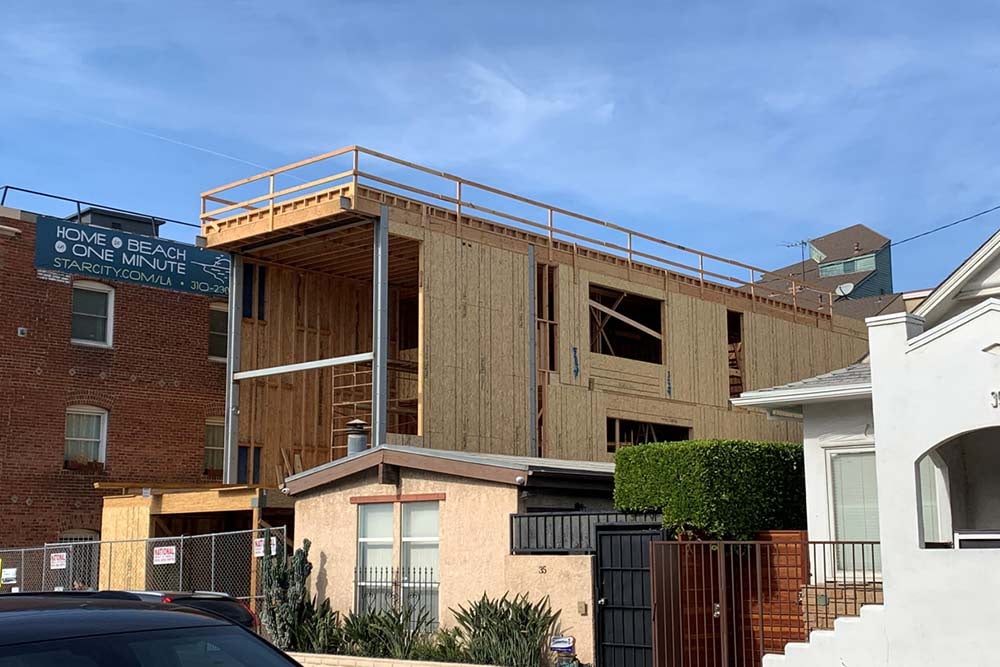 By Jessica Chang & Bryn Garrett
By Jessica Chang & Bryn Garrett
Many homeowners aspire to one day build their dream home, but are held back by confusion over the best path forward for making their dream a reality.
Should you tear your home down and start from a blank slate, or do attempt a remodel?
It’s impossible to give a definitive answer, but a trusted and skilled architect can help you weigh your options so that you land on the ideal solution for your project.
Below are some critical factors you should bear in mind when deciding between a remodel or new construction so that you can make the decision that is right for you.
Factors to Consider When Choosing Between a Remodel and New Construction
1. Is the existing structure safe?
This is perhaps the most important question to ask. Structural issues may be detected through a thorough property inspection. If the existing structure is not in good condition, it may rule out the possibility of a remodel.

This is especially true in cases where the foundations or key structural members are faulty, or in cases where an older home may no longer be up to code, particularly in earthquake- or wildfire-prone areas.
2. What is your budget?
There is often a misconception that a remodel will be significantly cheaper than a full, ground-up, new construction. But an extensive remodel can sometimes near the cost of a new build.

Unless you’re keeping the majority of the existing structure, you are introducing complexity to the project which the architect and contractor must account for. For example, the demolition process would need to be much more surgical and careful.
With this in mind, it’s important to have a clear sense of what your budget is and whether or not it is appropriately aligned with the goals of your project. If your design goals are challenging enough, there are situations where new construction may start to make more sense than a remodel.
3. What is your timeframe?
Depending on the scope of the project, a remodel can be completed significantly quicker than a new construction, especially if key elements of the home (foundation, supporting walls, etc.) are reused.
For individuals whose project involves the home that they currently live in, a remodel may make more sense than new construction. For individuals who don’t plan to move into the home for a significant period of time, time can be less of a constraint.

4. How important is sustainability to you?
If environmental sustainability is important to you, reusing as much of the existing structure as possible can help reduce your project’s carbon footprint and drive it closer to net zero carbon. This can be achieved in both a remodel or a new construction.
Concrete, for example, is one of the largest contributors of greenhouse gas emissions when it comes to architecture. One can reuse concrete foundations even when pursuing new construction. It may take some planning but this is a great place to reduce your carbon production.

5. What limits does your jurisdiction place on residential projects?
Most local jurisdictions place a limit on what can legally be considered a “remodel” vs new construction.
While it may seem like semantics, the distinction is important, if a project is deemed a new construction it will typically involve a more rigorous approval process which can disrupt the project’s timeline. Additionally, being deemed a new construction might trigger a tax reassessment that might potentially lead to a higher tax burden.

Usually, in order for a project to qualify as a remodel instead of a new construction, it will need to meet certain requirements.
First, it may need to fall within the same footprint (the foundation). Second, it will need to be the same number of stories, because building higher than the original structure could threaten surrounding views. Third, the home will typically need to preserve a certain percentage of the existing structure, which will typically be measured in walls. While the exact percentage will depend on local regulations, many jurisdictions require at least 50% of the structures existing walls be untouched.
An architect who is skilled in substantial remodels should be able to meet all of these requirements while still meeting the goals of your project, if it is important to you that your home be classified as a remodel instead of a new construction.
6. Is your home in a historical district?
If your home exists in a historical district or already has a historical designation, this can limit how much you are able to change or update the structure of the home. (This is typically only a concern when it comes to the exterior—not the interior—of the home.) It might, for example, limit the materials or colors that you use on the exterior portion of the home, or even the overall style of architecture.

In San Francisco, for example, if a structure is more than 50 years old it will automatically trigger a historical review. If the review determines that someone historically significant lived there in the past or that something of historic or cultural significance occurred there, it could lead to historical designation.
The Value of an Architect
If you are still unsure as to which path is the right one for you, a skilled architect, with experience in both new construction as well as significant remodeling projects, can help guide you toward the appropriate solution.
The sooner in the process that you are able to involve the architect, the better the end result will be. When you begin discussing your project, it’s important that you explain the goals, budget, and timeframe for your project, as all of these will impact which route is best for you.

Written by Jessica Chang
Jessica Chang, AIA, is a graduate of the University of Southern California and an Associate at EYRC. She has led projects in both the commercial and residential studios since joining EYRC in 2018. With her passion for design, Jessica brings an energetic perspective and critical eye to the firm. Prior to her tenure at EYRC, Jessica worked at Morphosis Architects for four years on internationally recognized projects ranging from hotels and train stations, to embassies and city-scale masterplans. Her dedication to the field extends beyond design projects as she leads the Digital Practice Committee and co-leads the Design Justice Committee at EYRC. Her determination to innovate and promote equity makes her a valuable and empathetic architect.
